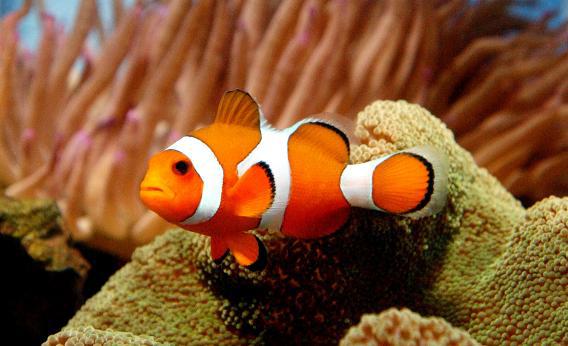Contrary to popular belief, winter storm Nemo is not named after a fish. And it is most certainly not named after the fictional clownfish protagonist of the Disney/Pixar hit film Finding Nemo. Let me explain.
There are some, including the National Weather Service, who frown upon The Weather Channel’s decision to begin naming winter storms at all. I am not among them. If people weren’t calling this weekend’s Nor’easter Nemo, they’d almost certainly be calling it something far more annoying, like Snowmageddon II or Snowpocalypse Now. But I and several readers did wonder, when The Weather Channel released its storm-name idea last fall, about the odd explanations for some of the names it settled on. Nemo, for instance, is defined thusly in the cable network’s official announcement:
- Nemo: A Greek boy’s name meaning “from the valley,” means “nobody” in Latin.
That’s not the only head-scratcher among the network’s storm-name explanations:
- Gandolf: A character in a 1896 fantasy novel in a pseudo-medieval countryside.
- Khan: Mongolian conqueror and emperor of the Mongol empire.
- Orko: The thunder god in Basque mythology.
- Q: The Broadway Express subway line in New York City.
- Rocky: A single mountain in the Rockies.
- Yogi: People who do yoga.
Got it? Not Gandalf from Lord of the Rings, or Khan from Star Trek, or Q from Star Trek or the James Bond films, or… you get the idea. No, the channel is careful to give all of its winter-storm names origin stories that spring from either ordinary nouns or proper names that are in the public domain. So today I asked The Weather Channel’s Bryan Norcross, senior executive director of weather content, whether some of those choices might have had a little something to do with a desire to avoid any copyright infringement claims.
“We asked that question of ourselves,” Norcross said of whether calling a storm “Nemo,” for instance, might prompt a call from Disney’s lawyers. “What I decided was that we didn’t need to go there if we went the historic way, and it would make a better story.” He added, “The idea that (a name) was familiar but had an interesting back story just seemed like a good plan.”
For instance, Norcross went on, “For ‘J’ we had ‘Jor-El’ there, as in Superman’s father, but then I just decided it didn’t fit with the antiquity kind of theme.” And was “Gandolf” preferable to “Gandalf” in part because the former was in the public domain? “That’s the thinking,” he said. “Like everything, we had the legal department review the list of names.” But Norcross said the legal department ended up approving all of them, because he and his colleagues had already been scrupulous about avoiding any that might get the network in trouble.
Norcross said his original idea was to base the winter-storm names on popular baby names from various decades, while being careful not to duplicate any of the National Weather Service’s tropical-storm names. But Pete Schwartz, an executive producer at the network, proposed using Greek and Roman names instead, for greater differentiation. Norcross loved the idea. But on several letters, he said, they couldn’t come up with a name from ancient mythology that would be easily pronounceable and recognizable—so they improvised. And if some of the resulting names happen to remind people of characters from various sci-fi classics, well, that’s only natural: “Everybody I know that’s a meteorologist is a science-fiction kind of person,” Norcross said.
